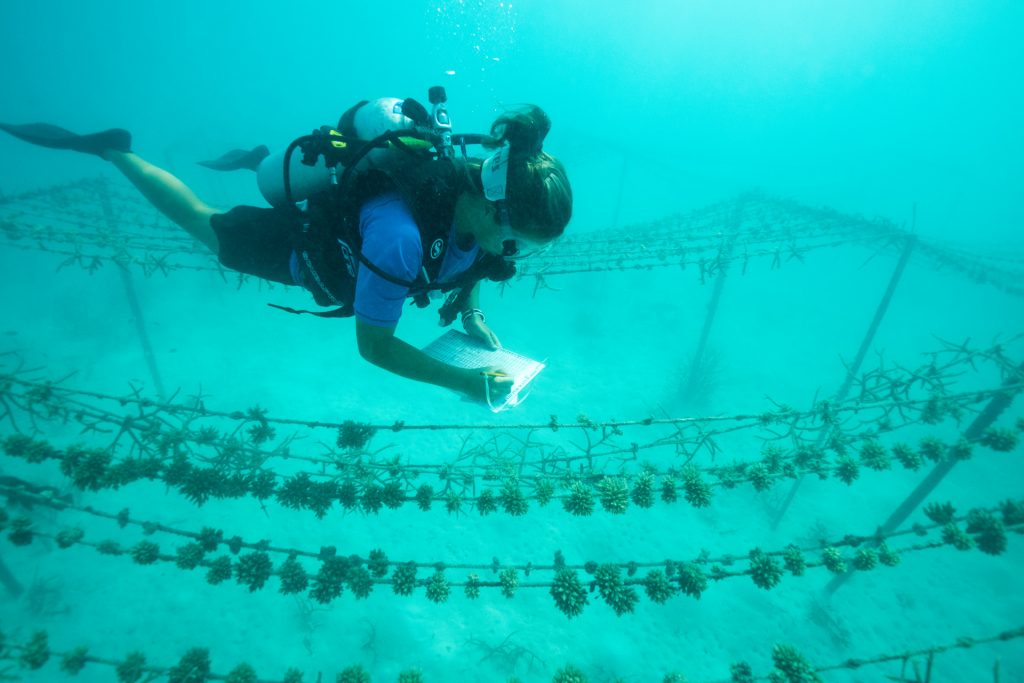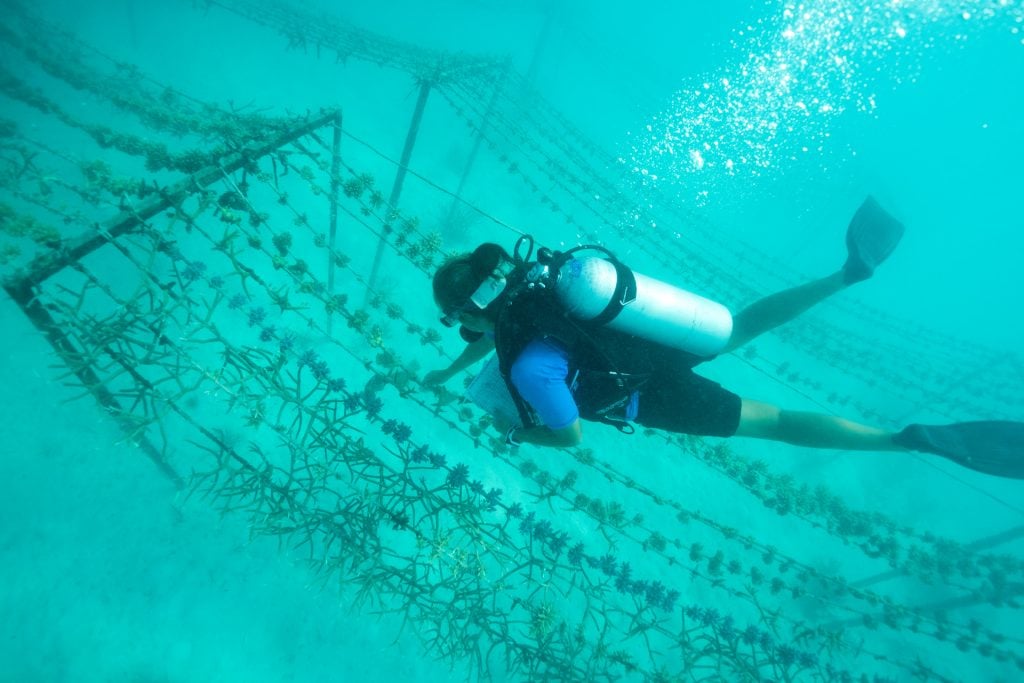As with any project, we have encountered many challenges during both the planning and operational stages of the project. We feel it’s important to share not only the successes of our project, but also the pitfalls and challenges we have faced. In this way we hope to prevent others from making the same mistakes, and provide solutions for others in the field to freely use.
Planning & financing:
Being based at a resort, one of our primary goals was of course to raise guest awareness and create an exciting and interactive experience for our guests, but we were also determined for our project to have a focus on academic research. We thought at first that these two ideologies were going to conflict, but as time has gone on we have found that the guests of Gili Lankanfushi actually love the research side of our project, with some going so far as to lend innovative ideas to the study.
Finding the money to initially set up and run the project was going to be a challenge in itself. Initial funding to start up the project was provided by the resort, Gili Lankanfushi, but in order to continue this project, as well as satisfy the needs of the resort by providing the guest experience, we needed to come up with something else. Like every other resorts in Maldives operating such a program, we put in place a donation scheme, whereby guests donate and plant the coral with us. We began with 25% of a line donation going straight to the resort, but arranged with the resort for the other 75% of that same donation to be put into a separate fund handled solely by our marine biology team. We call this the Gili SEAS fund. SEAS is an acronym which stands for Social & Environmental Awareness and Sustainability, and the money in this fund is used only for projects dealing with the environmental or social sustainability of the resort and it’s surroundings. Generally, the money goes back into the Coral Lines project, keeping it running.
Accurate Data?
Another challenge we faced was allowing it to become a guest experience, but still keeping it controlled enough that our results were presumed accurate within a scientific community. By inviting guests to come and plant a coral line, we were increasing awareness about the coral itself, and whilst the guests physically help us to place each coral frag, the fragments were measured one by one by the same two biologists each time, and the bulk of the data collection happens behind the scenes during maintenance dives which guests do not see.
From initial inception, through to the operation of the project, we managed to appease both the resort with income and guest experiences, and also ourselves both as academic scientists with data collection, and as environmental educators, giving guests the opportunity to get up close and personal with an educational and interactive experience.

Time struggles:
We had found that one dive per week of maintenance was enough to begin with, cleaning algae off the lines, and measuring those lines which had reached a 3 month monitoring period. To measure one line takes about 10 minutes, and to clean one line with a toothbrush takes on average 4 minutes.
Inputting data and updating the website post dive takes a further ~20 minutes per line.
Since the above was written, the resort has now employed two full time marine biologists and a voluntary role to ensure a more sustained role within the resort. This enables us to spend more time on environmental and sustainability projects, and enhance our guest experiences!

Operational; diving:
Originally we started to do a maintenance dive once per week. This was to measure any lines which had reached the next 3 month monitoring period, as well as to clean any algae off the lines which builds up over time. To begin with we could complete one full maintenance dive within one hour. However, after a few months passed, as our nursery grew, the maintenance dives lasted longer, and in October 2014 it took two of us more than two hours to maintain the nursery per week! We either need another set of hands, otherwise we need to reduce the amount of maintenance we are doing on our lines. In 2015, we no longer clean algae from the lines as thoroughly as we did. This is partly because we believe that by doing so, we were actually spreading disease, but also we have come to realise there may not be a need for it. We now only dive to measure a line in need of monitoring, or to check everything is okay within the nursery, which has drastically cut the time consumed by the project, and so far has had no negative effect on survival or growth rates. In 2018, we maintain that the shaking method is the best way to clean the lines.

Operational; cleaning:
We began by using our hands. Whilst wearing gloves, we would gently rub off algal overgrowth, however this became too time consuming and following advice from other nursery managers, we switched to using toothbrushes. After a particularly nasty outbreak of white syndrome, we stopped cleaning our corals. There was a possibility that by cleaning the ropes with toothbrushes (the same toothbrush for each rope) we were accidentally abrading the coral tissue, we were both spreading pathogens from one coral to another, as well as creating a small lesion within which the pathogen could manifest, thus spreading the disease (Sweet pers comms). One of the experiments we wanted to conduct was to clarify if cleaning the algae from our ropes really is necessary. We have found that giving each rope a vigorous shake is enough to keep them free of the worst algal species. We swim swiftly along the rope, shaking after every 5 frags or so, only taking the time to pick off algae if it is not coming free or it’s particularly big. We do this about once per month per line.

Among the challenges faced by many coral nurseries are coral diseases. It was interesting to see that some species were more susceptible than others, but we did end up with quite a high mortality rate caused solely by this syndrome. To prevent the spread of disease once an outbreak had been identified, we stopped cleaning immediately. We didn’t touch coral fragments and we disinfected all equipment used in the nursery. This did seem to stop the spread.
For corals already infected, we tried to physically cut off the diseased tissue. Using bone cutting pliers, branches showing symptoms can be cut off about 1 cm below the disease legion. This did seem to stop the progression and healthy tissue did grow back.
